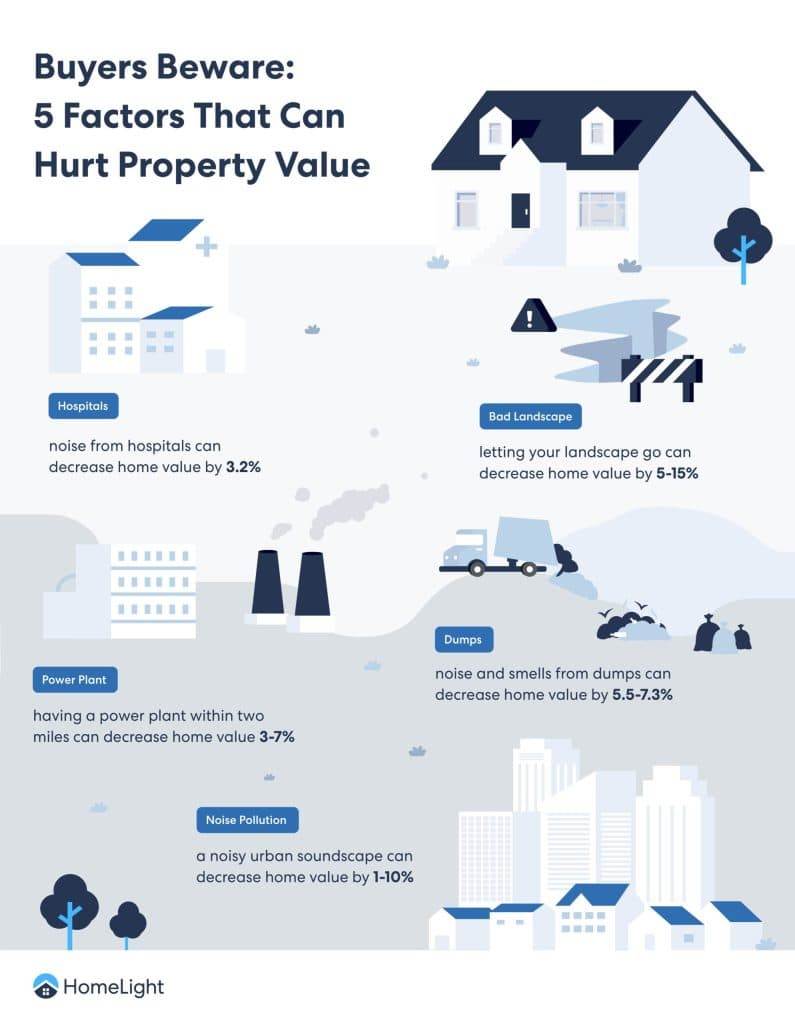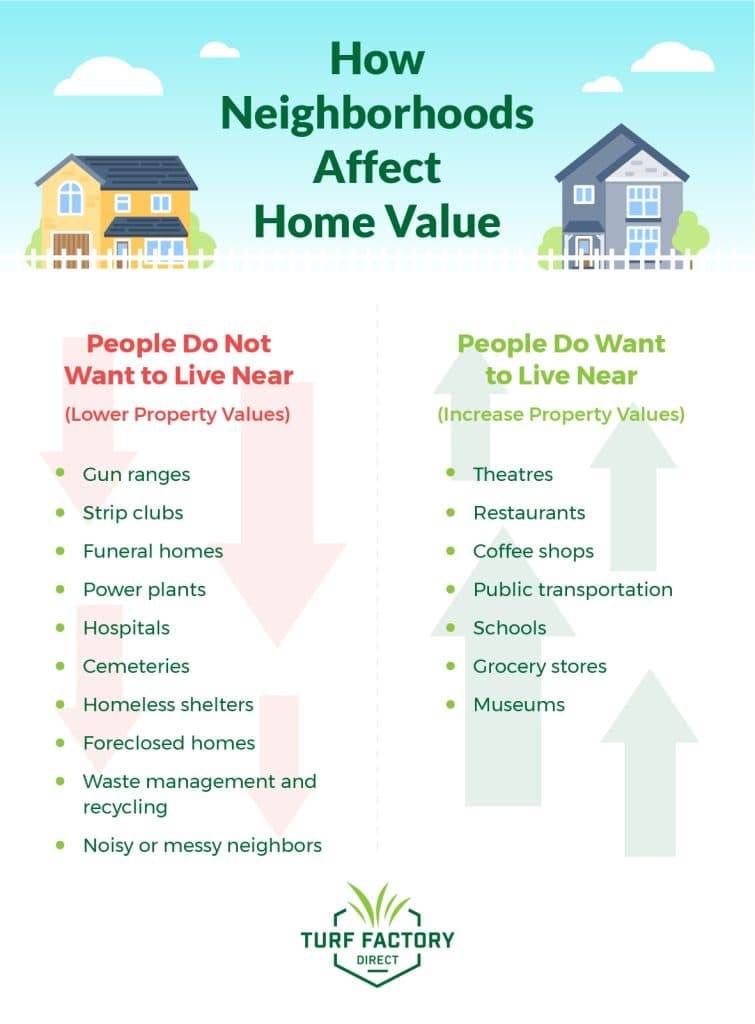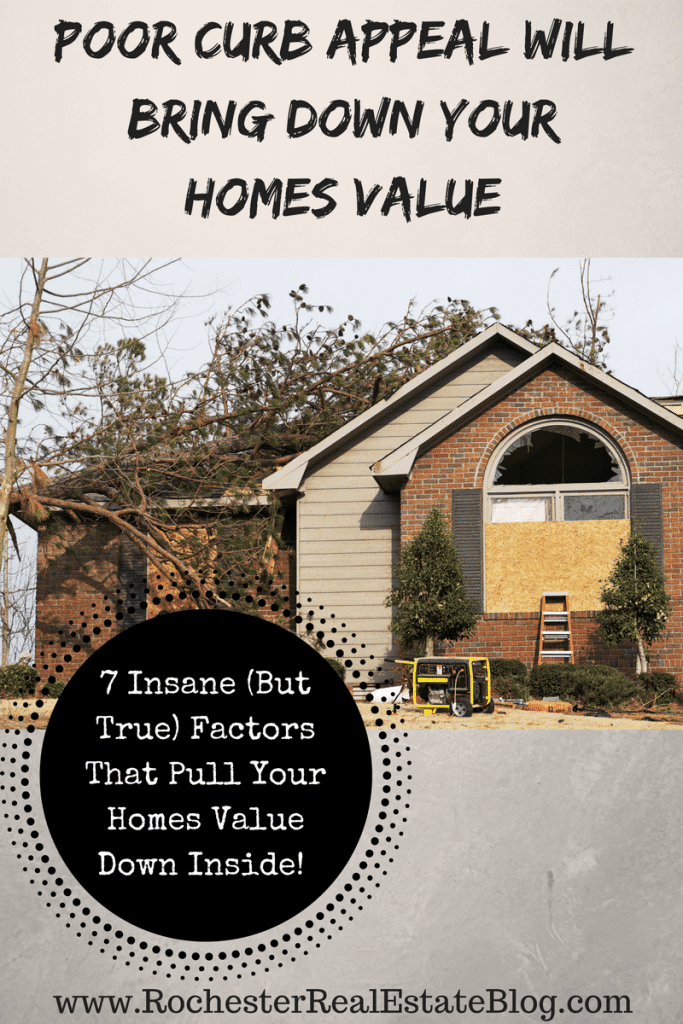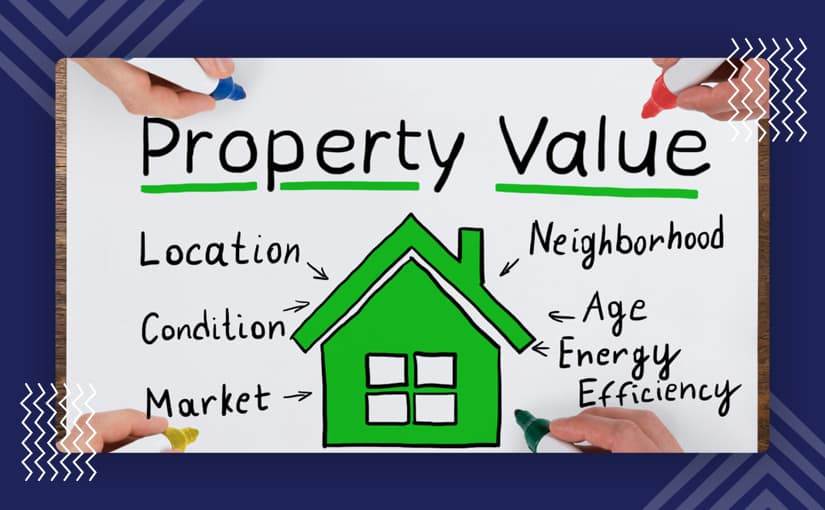In the world of real estate, numerous factors can influence the value of a house, sometimes causing it to plummet unexpectedly. Understanding these elements can help homeowners make informed decisions and take proactive measures to safeguard their property’s worth. This article delves into the various factors that can cause a house’s value to decline, addressing issues such as location, structural integrity, market conditions, and wear and tear. By recognizing these potential pitfalls and implementing necessary measures, you can maintain and possibly even enhance the value of your home in an ever-changing market.

This image is property of www.homelight.com.
Location Factors
Neighborhood Crime Rate
The neighborhood crime rate is a significant factor that can bring down the value of a house. High crime rates create an unsafe environment, making potential buyers hesitant to invest in the area. The presence of criminal activities or frequent reports of thefts, burglaries, or violent incidents can negatively impact the perceived safety of a neighborhood.
Proximity to Unpleasant Facilities
The proximity to unpleasant facilities such as landfills, sewage treatment plants, or factories can significantly decrease the value of a house. Unpleasant odors, noise pollution, and potential health hazards associated with such facilities make the living experience less desirable. Homebuyers typically prioritize peaceful surroundings and would be discouraged from purchasing a property located near unpleasant facilities.
Lack of Amenities
A lack of amenities in the neighborhood can also bring down the value of a house. Amenities such as parks, recreational facilities, shopping centers, and quality schools enhance the overall living experience. The absence or limited availability of these amenities may deter potential buyers, reducing the demand for properties in the area and ultimately decreasing their value.
Property Condition
Deteriorated Structure
A deteriorated structure is a significant factor that devalues a house. Visible signs of wear and tear, such as cracked walls, foundation issues, or sagging roofs, can give the impression that the property requires extensive repairs or renovations. Buyers are often willing to pay more for well-maintained homes, so a deteriorated structure can hinder the sale of a house and negatively impact its value.
Outdated Interior
An outdated interior can also bring down the value of a house. Old-fashioned designs, obsolete fixtures, and aging appliances can make a property appear less appealing to potential buyers. Many buyers prefer modern and updated interiors, and a house with an outdated interior may receive lower offers or take longer to sell.
Poor Maintenance
Poor maintenance is another factor that can significantly decrease the value of a house. Lack of regular upkeep, neglecting repairs, or ignoring necessary maintenance tasks can lead to various issues such as leaky faucets, damaged flooring, or malfunctioning systems. When a house shows signs of poor maintenance, it raises concerns about the overall condition of the property, further diminishing its value in the market.

This image is property of turffactorydirect.com.
External Factors
Noise Pollution
Excessive noise pollution in the surroundings can substantially reduce the value of a house. Noise from busy roads, airports, railways, or nearby industries can disturb the peace and quiet of a neighborhood. Buyers often seek homes in tranquil environments, and if a property is subjected to constant noise, it may be considered less desirable and experience a drop in value.
Inadequate Parking
A lack of adequate parking spaces can be a significant drawback for potential buyers, leading to a decrease in the value of a house. Limited or inconvenient parking options make it difficult for residents and their guests to park their vehicles safely and conveniently. Insufficient parking spaces can cause inconvenience and frustration, lowering the overall appeal of the property.
Untidy Surroundings
Untidy surroundings, such as unkempt lawns, litter-filled streets, or dilapidated neighboring properties, can have a negative impact on the value of a house. The appearance of a neighborhood plays a crucial role in shaping the perception of potential buyers. If the immediate surroundings are unkempt or unsightly, it can give the impression of neglect and decrease the desirability of the property.
Structural Issues
Foundation Problems
Foundation problems are a serious concern that can significantly impact the value of a house. Cracked foundations, uneven floors, or walls that are not level pose a potential risk to the structural integrity of the property. Buyers are likely to be deterred by the potential financial burden and hassle of addressing foundation issues, leading to a decrease in the property’s value.
Roof Leaks
Roof leaks can cause significant damage to a house and decrease its value. Water stains, mold growth, or weakened structural components resulting from roof leaks indicate a need for immediate repairs. Buyers are likely to be wary of purchasing a property with a history of roof leaks or a roof in poor condition, as it can lead to expensive repairs and affect the overall value of the house.
Pest Infestation
Pest infestations, such as termites, rodents, or cockroaches, can be a major deterrent for potential buyers and decrease the value of a house. Pests can cause damage to the structure and compromise the hygiene and comfort of a property. The presence of pests suggests a lack of proper maintenance and can lead to expensive treatments, making the house less attractive to buyers.

This image is property of www.rochesterrealestateblog.com.
Accessibility
Difficult Commute
Difficult commuting options, such as long travel times, congested roads, or limited public transportation, can decrease the value of a house. Buyers often prioritize easy accessibility to workplaces, schools, and amenities. If a property is located in an area with poor transportation infrastructure or inconvenient commuting options, its value may be negatively impacted.
Limited Transportation Options
Limited transportation options within the vicinity can also bring down the value of a house. If the area lacks access to public transportation, nearby bus stops, or convenient access to major highways and transportation hubs, it can limit the mobility and convenience of residents. Buyers may perceive the location as inconvenient, leading to a decrease in the property’s value.
Inconvenient Location
An inconvenient location, such as being far from shopping centers, recreational facilities, or essential services, can be a factor that brings down the value of a house. Buyers often prioritize convenience and proximity to amenities. If a property is situated in a remote or isolated area, it may be perceived as less desirable and experience a decrease in its market value.
Negative Market Trends
Foreclosures in the Area
The presence of foreclosures in the area can have a negative impact on the value of a house. Foreclosures often indicate financial instability and lower property values in the surrounding neighborhoods. The perception of a distressed market can dissuade potential buyers, leading to decreased demand and subsequently lower property values.
Reduced Demand
A decrease in demand for properties in a particular area can bring down the value of a house. Factors such as economic downturns, population decline, or a saturation of available properties can lead to reduced demand. With fewer buyers interested in purchasing properties, homeowners may struggle to sell their houses at desired prices, resulting in a decline in the overall value of the area.
Depreciating Property Values
If property values in an area have been continuously decreasing over time, it can have a direct impact on the value of individual houses within that locality. Negative market trends, such as declining property values, can be indicative of various issues affecting the desirability and investment potential of a neighborhood. Homeowners may experience difficulty in maintaining or selling their properties at favorable prices, contributing to a decrease in value.

This image is property of www.supaliteroof.co.uk.
Poor School Districts
Low Test Scores
A poor school district with consistently low test scores can significantly impact the value of a house. Many homebuyers prioritize access to quality education for their children. When a school district performs poorly academically, it can deter potential buyers, particularly families, from choosing to live in the area. Consequently, houses located within such school districts may experience decreased value.
Lack of Extracurriculars
The absence or limited availability of extracurricular activities in a school district can influence the value of a house. Homebuyers often seek educational opportunities that promote a well-rounded learning experience beyond academics. If a school district lacks extracurricular programs or extracurricular options are limited, it may affect the desirability and, subsequently, the value of houses within that district.
Safety Concerns
Safety concerns within a school district, such as reports of bullying, lack of adequate security measures, or high disciplinary incidents, can impact the value of a house. Parents prioritize the safety and well-being of their children, and a perceived lack of safety within a school district can deter potential buyers, leading to a decrease in property values.
Environmental Hazards
Flood Risk
Properties located in flood-prone areas are at a higher risk of damage and subsequent devaluation. Frequent floods, even those caused by heavy rainfalls, can lead to significant property damage and increased insurance costs. Potential buyers are often cautious about purchasing homes in areas with a high flood risk, as it poses a threat to their investment and can result in decreased property values.
Air or Water Pollution
The presence of air or water pollution in the vicinity can negatively impact the value of a house. Pollution from nearby industrial sites, factories, or high traffic areas can contribute to poor air quality or contaminated water sources. These environmental hazards can be detrimental to residents’ health and overall well-being, making properties in such areas less attractive to potential buyers and decreasing their market value.
Presence of Radon or Asbestos
The presence of hazardous materials like radon or asbestos in a house can significantly decrease its value. Radon is a radioactive gas that can cause lung cancer, while asbestos is a known human carcinogen. Houses with known or suspected presence of these hazardous materials require costly mitigation and removal processes. Potential buyers are likely to be deterred from purchasing properties with such risks, leading to depressed property values.

This image is property of www.hubandoak.com.
Legal and Financial Issues
Unresolved Property Disputes
Unresolved property disputes, such as boundary disputes or unresolved legal claims, can impact the value of a house. These disputes introduce uncertainty and potential legal liabilities to potential buyers. Such issues can create complications during the sale process, leading to decreased interest from buyers and ultimately reducing the value of the property.
Unclear Title
Properties with unclear or disputed titles can experience a decrease in value. Unclear titles can arise due to issues such as unrecorded liens, conflicting property boundaries, or unresolved inheritance claims. These uncertainties cast doubt on the ownership rights and can discourage potential buyers from pursuing the purchase, leading to a decrease in the property’s market value.
Tax Liens or Assessments
Tax liens or assessments on a property can impact its value and marketability. Outstanding tax liens or assessments may result in financial burdens for potential buyers, leading to hesitancy in purchasing the property. The presence of tax liens or assessments can decrease the pool of interested buyers and potentially decrease the value of the house.
Lack of Renovation Potential
Limited Expansion Possibilities
Properties with limited or restricted options for expansion can experience a decrease in value. Many buyers seek properties with potential for growth and customization to meet their evolving needs. If a house has limited opportunities for expansion due to lot size, zoning regulations, or other restrictions, it may be perceived as less valuable and attract fewer interested buyers.
Inadequate Floor Plan
An inadequate floor plan can negatively impact the value of a house. Buyers often prioritize functional and well-designed floor plans that optimize space and flow. Houses with poor layouts, awkward room arrangements, or impractical space utilization may be perceived as less desirable and face difficulty in attracting buyers, resulting in a decrease in their market value.
Obsolete Design
An obsolete design can bring down the value of a house. Architectural styles, interior finishes, or outdated amenities can make a property appear dated. Buyers often seek modern and updated features that align with current trends and lifestyle preferences. If a house has an obsolete design, it may require significant renovations or updates to attract potential buyers, potentially decreasing its value.
In conclusion, various factors can bring down the value of a house. These factors range from location-related issues such as a high crime rate, proximity to unpleasant facilities, and lack of amenities to property condition concerns, including a deteriorated structure, outdated interior, and poor maintenance. External factors such as noise pollution, inadequate parking, and untidy surroundings can also impact a house’s value. Additionally, structural issues like foundation problems, roof leaks, and pest infestation can contribute to a decrease in value. Accessibility issues, negative market trends, poor school districts, and environmental hazards further influence the value of a house. Legal and financial issues, lack of renovation potential, and obsolete design can also contribute to a decreased market value. It is crucial for homeowners and potential buyers to consider these factors when evaluating the value of a property.
